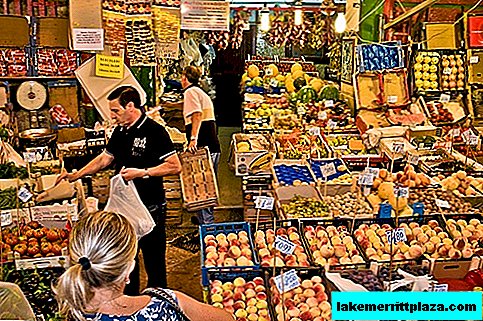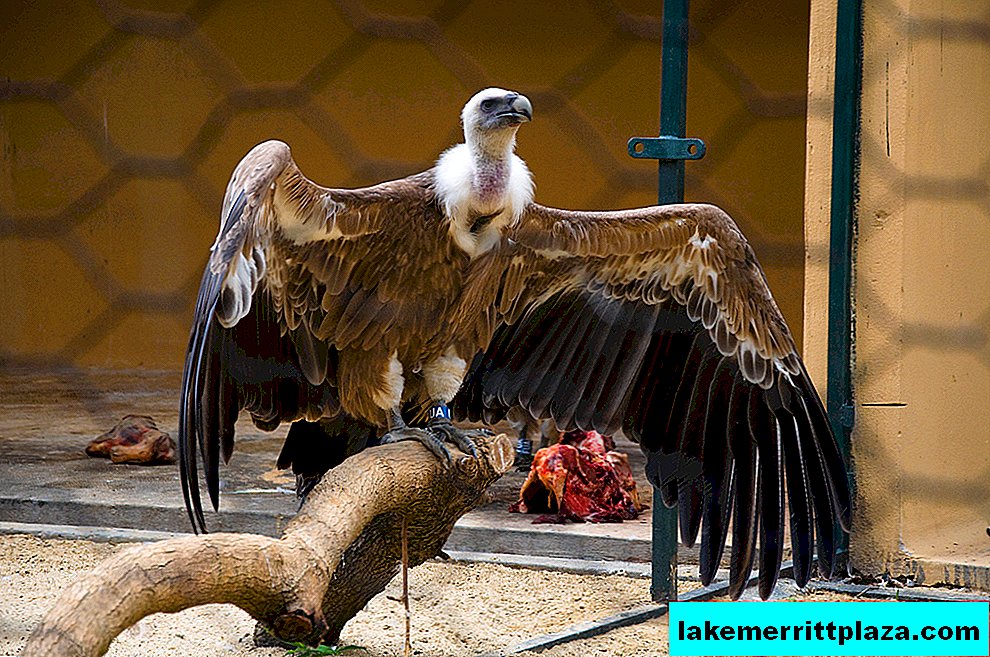Palermo is not only the largest port in Sicily, but also the fifth most populated city in all of Italy. Palermo can be called an open-air museum - such a huge number of architectural monuments of different styles and eras are collected in the city. In order to simplify the life of tourists, we decided to devote a separate post to the topic of what to see in Palermo.
The Pretoria Fountain is today called one of the most beautiful fountains in Italy, however, due to the large number of exposed statues, the pious inhabitants of Palermo also called it the "Fountain of Shame."
No. 10. Fountain "Pretoria" (Fontana Pretoria)
Pretoria Fountain It is a composition in the center of which one above the other three bowls are located, surrounded by statues of various mythological characters, heads of animals and monsters. On four sides, staircase bridges lead to the main Fountain, also decorated with mythical figures.

The fountain "Pretoria" pious citizens called the "fountain of shame"
Pretoria was created by Italian sculptor Francesco Camigliani in the middle of the 16th century to decorate the residence of the Viceroy of Naples and Sicily in Florence. After some time, the Pretoria Fountain was bought by the Senate of Palermo, transported to Sicily and in 1581 took its rightful place onPiazza Pretoria
No. 9. Teatro Massimo
Teatro Massimo in Palermo was built by the architect Giovanni Basile in 1897. It is the largest in Italy and one of the largest opera houses in Europe. The theater hall is designed for 3000 spectators, and its acoustics is considered one of the best in Italy. Another "feature" of the theater is the abundance of busts of great composers by sculptor Giusto Liva and his sons.
Like many Italians, the inhabitants of Palermo love and appreciate opera, which in Italy is considered an art for everyone, and tickets for performances are not too expensive and are quite accessible to everyone.
By the way, the final scenes of the famous film "The Godfather" were shot exactly on the steps of the Massimo Theater.

Massimo Theater - one of the largest opera houses in Europe
No. 8. Archaeological Museum of Antonio Salinas
Archaeological Museum of Antonio Salinas (Italian: Museo archeologico regionale Antonio Salinas) is housed in a 17th-century building, originally built for one of the religious orders. In the mid-19th century, the activities of the Order were outlawed, and the building was confiscated and transferred to the National Museum.
Archaeological Museum of Palermo proudly proud of its collections of exhibits from the antiquity and the Middle Ages. The museum’s collection contains many items that reflect the rich history of Sicily, which developed from ancient times under the influence of the most significant civilizations of antiquity - Hellas, Rome and Carthage.
The name of the Museum is inextricably linked with the name of the archaeologist and numismatist Antonio Salinas, who bequeathed to him his personal collection of 6 thousand objects. It is noteworthy that Salinas worked as a museum director for more than forty years - from 1873 to 1914.
Number 7. Puppet Museum (Italian: Museo Marionetto)
Puppet Museum famous for its collection of dolls, numbering more than three and a half thousand exhibits. Large and small, rag and wooden, puppets on ropes and knights in armor for years were assembled by a man passionately keen on studying, saving and promoting folk traditions and customs - Antonio Pasqualino, who founded in 1975 International Doll Museum in Palermo. To pass on his experience to descendants, Antonio Pasqualino became the founder of the Association for the Preservation of Sicilian Culture.

- The Puppet Museum in Palermo is famous for its collection of dolls
In addition to traditional excursions, films about dolls are shown at the Museum, master classes on puppetry, workshops and lectures for schoolchildren and students of theatrical universities are held. Finally, the Puppet Museum owns an extensive library on the history of puppets and puppet theaters.
No. 6. Palermo Markets
Nearly a millennium has passed since the Saracens left the coast of Sicily, but the Arabian history of the city comes to life when you find yourself in its markets. Straight and narrow shopping arcades are filled with spicy oriental flavors, and your head is spinning from the abundance of exotic goods that are boasted by noisy merchants in attempts to attract a gaping buyer.

- Vucchiria market is filled with spicy oriental flavors
Ballaro Market (Italian: Ballaro) is located in the very center of the city, in its historic quarter of Albergheria. Here you can buy almost everything - from cuttlefish, snails and octopuses to cheese kachokavallo (Italian.Caciocavallo) bags and sandals.
Vucchiria Market (Vucciria) is located on Piazza San Domenico. This market is famous for the abundance and freshness of fish, which early in the morning from local fishermen is bought by the owners of cafes and restaurants. Sicilian peasants who bring meat, fruits and vegetables to Vucchiria also offer their goods here.
Other Palermo markets worth mentioning are Mercato di Capo (Italian: Mercato di Capo) and Pescheria (Italian: Pescheria Market).
To be continued…
Photo by vic15, Ruggero Poggianella,> Xerones,
gabrillu










